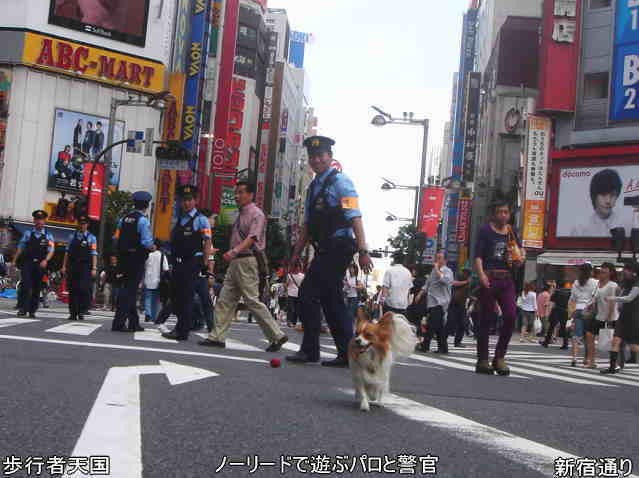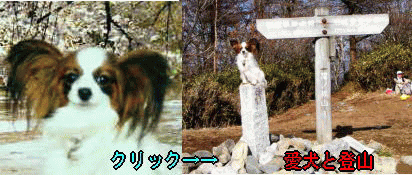カテゴリ: 犬
犬の 避妊・去勢手術後の合併症
については2007年にアメリカで学術論文が公表されている。そのことについてはブログ「愛犬問題」で既に翻訳した要約文を紹介した。詳細は 避妊・去勢でガンの骨肉腫等の多病誘発! アメリカの獣医学の学術論文を翻訳
にある。
今回はその後遺症の一つである 骨肉腫 に関する英文の学術論文を一般愛犬家が理解しやすいように意訳して紹介する。
犬の骨肉腫は ガン の一種であり、発症すると治癒しにくい怖い病気だ。
6~7歳の発症が多い。発症すると、足が腫れ、足を引きずって歩くことが多いよいだ。アゴの骨や肺に転移することも多い。治療しても1年以内に死亡するのが普通のようだ。
日本の獣医界は獣医大学も含め、骨肉腫の原因は不明と決め込んで、真実を明らかにしようとする姿勢すらない。獣医大学は獣医界の詐欺商法の片棒を担いで恥じない。 教授連 天敵 集団だ。悪質すぎる。国民を愚弄している。
 獣医は避妊手術をすると、 乳腺腫瘍
や 子宮蓄膿症
の予防になると避妊手術を勧めているが、詐欺商法だ。
避妊・去勢手術によるいろんな合併症の発症を愛犬家の国民にに隠している。
獣医は避妊手術をすると、 乳腺腫瘍
や 子宮蓄膿症
の予防になると避妊手術を勧めているが、詐欺商法だ。
避妊・去勢手術によるいろんな合併症の発症を愛犬家の国民にに隠している。
健康な犬の健康な臓器を切除するのはカネの亡者の悪魔の悪業だ。一切の言い訳、屁理屈、詭弁は無用だ。自然の摂理の冒涜だ。天地創造の神への反逆だ。

翻訳文
骨肉腫(骨の癌)
いろんな犬種の犬が骨肉腫になるリスク要因について調査研究したところ、避妊・去勢手術をした犬は雄雌共に、してない犬に比較して、 リスクが2倍 になることが明らかになった。
犬種の一つであるロットワイラーが骨肉腫になるリスクが比較的に高いことはすでに研究されていた。
同一犬種について歴代の犬を遡及的に調査研究した結果、若い時に避妊・去勢手術をした犬は骨肉腫になるリスクが高いことが明らかになった。言い換えると、年齢が増えてから避妊・去勢手術をした犬は、その加齢が増えるにつれてそのリスクが低下する。
1歳未満で避妊・去勢をしたロットワイラーは、してない犬に比較して、雄で 3,8倍 、雌で 3,1倍 の比率で骨肉腫に罹病しやすい。実際、1歳未満で避妊・去勢したロットワイラーは、 骨肉腫に罹病するリスクが、雄で28,4%、雌で25,1% であった。
この結果は、いろんな犬種で早期に避妊・去勢した犬の研究結果とも一致している。即ち、不妊手術をした時の犬の年齢は骨肉腫の発病の恐れを評価するファクターとして扱えるという利点をもたらした研究結果と一致する。
性ホルモンは骨の構造の形成とその大きさの保持に関与 していることは周知のことである。その上に、今回の研究で明らかになったことは、性ホルモンの影響を受ける時間と骨肉腫のリスクとの間には反比例の関係があるということである。
犬種のサイズが大きいほど、特に体重が大きいほど骨肉腫になるリスクは増加する。
骨肉腫は中型犬種、大型犬種、超大型犬種では一般的な死因である。
骨肉腫はゴールデン・レトリバーの場合、三番目に最も一般的な死因であり、さらに大きな犬種では、もっと普通の死亡原因である。
骨肉腫は発病後の経過が悪いことや多くの犬種で予後の悪さが頻繁に起こっていることを考慮すると、中型犬種、大型犬種、および、超大型犬種は 幼犬時に避妊去勢をすると骨肉腫になって死亡するリスクが著しく増加する。
(翻訳者 : ブログ「愛犬問題」管理人Paroowner)

原文 は次の学術論文の中ほどにある。
Long-Term Health Risks and Benefits Associated with Spay / Neuter in Dogs
犬の避妊・去勢による健康上のリスクと利点 ー長期観点から統計調査ー
Osteosarcoma (Bone Cancer)
A multi-breed case-control study of the risk factors for osteosarcoma found that spay/neutered dogs (malesor females) had twice the risk of developing osteosarcoma as did intact dogs.
This risk was further studied in Rottweilers, a breed with a relatively high risk of osteosarcoma. This retrospective cohort study broke the risk down by age at spay/neuter, and found that the elevated risk of osteosarcoma is associated with spay/neuter of young dogs14. Rottweilers spayed/neutered before one year of age were 3.8 (males) or 3.1 (females) times more likely to develop osteosarcoma than intact dogs.
Indeed, the combination of breed risk and early spay/neuter meant that Rottweilers spayed/neutered before one year of age had a 28.4% (males) and 25.1% (females) risk of developing osteosarcoma.
These results are consistent with the earlier multi-breed study13 but have an advantage of assessing risk as a function of age at neuter. A logical conclusion derived from combining the findings of these two studies is that spay/neuter of dogs before 1 year of age is associated with a significantly increased risk of osteosarcoma.
The researchers suggest a cause-and-effect relationship, as sex hormones are known to nfluence the maintenance of skeletal structure and mass, and also because their findings showed an inverse relationship between time of exposure to sex hormones and risk of osteosarcoma.
The risk of osteosarcoma increases with increasing breed size and especially height13. It is a common cause of death in medium/large, large, and giant breeds. Osteosarcoma is the third most common cause of death in Golden Retrievers10 and is even more common in larger breeds.
Given the poor prognosis of osteosarcoma and its frequency in many breeds, spay/neuter of immature dogs in the medium/large, large, and giant breeds is apparently associated with a significant and elevated risk of death due to osteosarcoma.

 避妊・去勢手術後の 合併症
のその他の項目についても、愛犬家の要望が多いので、追って翻訳して紹介するつもりだ。少々お時間をいただきたい。
避妊・去勢手術後の 合併症
のその他の項目についても、愛犬家の要望が多いので、追って翻訳して紹介するつもりだ。少々お時間をいただきたい。
次回は 前立腺癌 ・Prostate Cancerについて翻訳して記述する。
なお、 甲状腺機能低下症 については既に次の随想に翻訳文を紹介してある。
避妊・去勢で甲状腺機能低下症になるぞ! 肥満、無気力、脱毛などの難病に!
 避妊去勢有害無用論の随想集
避妊去勢有害無用論の随想集

関連随想集
狂犬病予防注射の問題点については通常のHPにも詳述。

 狂犬病予防ワクチン注射のからくり 狂犬病予防法は御用済みの悪法だ
狂犬病予防ワクチン注射のからくり 狂犬病予防法は御用済みの悪法だ


 愛犬は公園でノーリード 動物愛護法と犬 公園ノーリードの犬達の写真集1
愛犬は公園でノーリード 動物愛護法と犬 公園ノーリードの犬達の写真集1
 公園犬ノーリード禁止は条例の曲解だね
公園犬ノーリード禁止は条例の曲解だね
姉妹HP

今回はその後遺症の一つである 骨肉腫 に関する英文の学術論文を一般愛犬家が理解しやすいように意訳して紹介する。
犬の骨肉腫は ガン の一種であり、発症すると治癒しにくい怖い病気だ。
6~7歳の発症が多い。発症すると、足が腫れ、足を引きずって歩くことが多いよいだ。アゴの骨や肺に転移することも多い。治療しても1年以内に死亡するのが普通のようだ。
日本の獣医界は獣医大学も含め、骨肉腫の原因は不明と決め込んで、真実を明らかにしようとする姿勢すらない。獣医大学は獣医界の詐欺商法の片棒を担いで恥じない。 教授連 天敵 集団だ。悪質すぎる。国民を愚弄している。
 獣医は避妊手術をすると、 乳腺腫瘍
や 子宮蓄膿症
の予防になると避妊手術を勧めているが、詐欺商法だ。
避妊・去勢手術によるいろんな合併症の発症を愛犬家の国民にに隠している。
獣医は避妊手術をすると、 乳腺腫瘍
や 子宮蓄膿症
の予防になると避妊手術を勧めているが、詐欺商法だ。
避妊・去勢手術によるいろんな合併症の発症を愛犬家の国民にに隠している。健康な犬の健康な臓器を切除するのはカネの亡者の悪魔の悪業だ。一切の言い訳、屁理屈、詭弁は無用だ。自然の摂理の冒涜だ。天地創造の神への反逆だ。

翻訳文
骨肉腫(骨の癌)
いろんな犬種の犬が骨肉腫になるリスク要因について調査研究したところ、避妊・去勢手術をした犬は雄雌共に、してない犬に比較して、 リスクが2倍 になることが明らかになった。
犬種の一つであるロットワイラーが骨肉腫になるリスクが比較的に高いことはすでに研究されていた。
同一犬種について歴代の犬を遡及的に調査研究した結果、若い時に避妊・去勢手術をした犬は骨肉腫になるリスクが高いことが明らかになった。言い換えると、年齢が増えてから避妊・去勢手術をした犬は、その加齢が増えるにつれてそのリスクが低下する。
1歳未満で避妊・去勢をしたロットワイラーは、してない犬に比較して、雄で 3,8倍 、雌で 3,1倍 の比率で骨肉腫に罹病しやすい。実際、1歳未満で避妊・去勢したロットワイラーは、 骨肉腫に罹病するリスクが、雄で28,4%、雌で25,1% であった。
この結果は、いろんな犬種で早期に避妊・去勢した犬の研究結果とも一致している。即ち、不妊手術をした時の犬の年齢は骨肉腫の発病の恐れを評価するファクターとして扱えるという利点をもたらした研究結果と一致する。
性ホルモンは骨の構造の形成とその大きさの保持に関与 していることは周知のことである。その上に、今回の研究で明らかになったことは、性ホルモンの影響を受ける時間と骨肉腫のリスクとの間には反比例の関係があるということである。
犬種のサイズが大きいほど、特に体重が大きいほど骨肉腫になるリスクは増加する。
骨肉腫は中型犬種、大型犬種、超大型犬種では一般的な死因である。
骨肉腫はゴールデン・レトリバーの場合、三番目に最も一般的な死因であり、さらに大きな犬種では、もっと普通の死亡原因である。
骨肉腫は発病後の経過が悪いことや多くの犬種で予後の悪さが頻繁に起こっていることを考慮すると、中型犬種、大型犬種、および、超大型犬種は 幼犬時に避妊去勢をすると骨肉腫になって死亡するリスクが著しく増加する。
(翻訳者 : ブログ「愛犬問題」管理人Paroowner)

原文 は次の学術論文の中ほどにある。
Long-Term Health Risks and Benefits Associated with Spay / Neuter in Dogs
犬の避妊・去勢による健康上のリスクと利点 ー長期観点から統計調査ー
Osteosarcoma (Bone Cancer)
A multi-breed case-control study of the risk factors for osteosarcoma found that spay/neutered dogs (malesor females) had twice the risk of developing osteosarcoma as did intact dogs.
This risk was further studied in Rottweilers, a breed with a relatively high risk of osteosarcoma. This retrospective cohort study broke the risk down by age at spay/neuter, and found that the elevated risk of osteosarcoma is associated with spay/neuter of young dogs14. Rottweilers spayed/neutered before one year of age were 3.8 (males) or 3.1 (females) times more likely to develop osteosarcoma than intact dogs.
Indeed, the combination of breed risk and early spay/neuter meant that Rottweilers spayed/neutered before one year of age had a 28.4% (males) and 25.1% (females) risk of developing osteosarcoma.
These results are consistent with the earlier multi-breed study13 but have an advantage of assessing risk as a function of age at neuter. A logical conclusion derived from combining the findings of these two studies is that spay/neuter of dogs before 1 year of age is associated with a significantly increased risk of osteosarcoma.
The researchers suggest a cause-and-effect relationship, as sex hormones are known to nfluence the maintenance of skeletal structure and mass, and also because their findings showed an inverse relationship between time of exposure to sex hormones and risk of osteosarcoma.
The risk of osteosarcoma increases with increasing breed size and especially height13. It is a common cause of death in medium/large, large, and giant breeds. Osteosarcoma is the third most common cause of death in Golden Retrievers10 and is even more common in larger breeds.
Given the poor prognosis of osteosarcoma and its frequency in many breeds, spay/neuter of immature dogs in the medium/large, large, and giant breeds is apparently associated with a significant and elevated risk of death due to osteosarcoma.

 避妊・去勢手術後の 合併症
のその他の項目についても、愛犬家の要望が多いので、追って翻訳して紹介するつもりだ。少々お時間をいただきたい。
避妊・去勢手術後の 合併症
のその他の項目についても、愛犬家の要望が多いので、追って翻訳して紹介するつもりだ。少々お時間をいただきたい。次回は 前立腺癌 ・Prostate Cancerについて翻訳して記述する。
なお、 甲状腺機能低下症 については既に次の随想に翻訳文を紹介してある。
避妊・去勢で甲状腺機能低下症になるぞ! 肥満、無気力、脱毛などの難病に!
 避妊去勢有害無用論の随想集
避妊去勢有害無用論の随想集

関連随想集
狂犬病予防注射の問題点については通常のHPにも詳述。
 狂犬病予防ワクチン注射のからくり 狂犬病予防法は御用済みの悪法だ
狂犬病予防ワクチン注射のからくり 狂犬病予防法は御用済みの悪法だ


 愛犬は公園でノーリード 動物愛護法と犬 公園ノーリードの犬達の写真集1
愛犬は公園でノーリード 動物愛護法と犬 公園ノーリードの犬達の写真集1
 公園犬ノーリード禁止は条例の曲解だね
公園犬ノーリード禁止は条例の曲解だね
姉妹HP

お気に入りの記事を「いいね!」で応援しよう
[犬] カテゴリの最新記事
-
なぜ犬を飼うのか❓ 犬がいるから🐕 Bec… 2024.08.10 コメント(7)
-
2024年元旦 あけましておめでとうご… 2024.01.01 コメント(2)
-
犬種別ランキングの昔と現在の変遷🐕パピ… 2022.06.16 コメント(2)
【毎日開催】
15記事にいいね!で1ポイント
10秒滞在
いいね!
--
/
--
PR
X
Keyword Search
▼キーワード検索
Freepage List

★手作り食事とドッグフード

鶏の骨が大好き🐓

手作り食事は飼い主と同じ物を🐕

塩分は犬にも必須不可欠だ

ドッグフード原料の偽装表示

サプリメントは不要

チョコレートが好きだ🍫

タマネギも有益🧅

味噌汁もよい

牛乳を飲ますには

療法食はいかさま商品

おやつも人用を

チーズも人用を

ケーキも人用が良い🎂

ビタミンC無くて良い

野菜果物無くて良い

魚の残飯もよい

豚の骨 バックリブ スペアリブ🐖

煮干し いりこ

犬用ジャーキーは危険!

香辛料 スパイス

エトキシキン・防腐剤

キシリトール有益無害

ココナッツオイルの虚偽広告

食薬同源 食が主で薬は従

犬の好きな食べ物

手羽先の先を安く入手する方法🐓

狂犬病注射有害無用!副作用で健康被害死亡

混合ワクチン注射有害無用!副作用で死亡も

狂犬病ハガキ・戸別訪問

ワクチン症候群は怖い病気

獣医界の六大詐欺商法

獣医大学は詐欺師の養成学校

昔書いた 狂犬病ワクチン有害無用論 No1~No50

ワクチン接種による皮膚病

★ノミ蚊ダニ駆除

ひば油・ひば水 皮膚炎や殺菌殺虫に

猫にもひば油は有効

ネクスガードは有毒

レボリューションは悪魔の薬剤

★フィラリア予防薬と治療薬

フィラリア予防薬は無用!

フィラリア薬の偽装欺瞞

★アレルギ-

ワクチンでアレルギ-

逆くしゃみ症

アナフィラキシーの怖さ

アトピー性皮膚病

自己免疫性皮膚炎

薬剤アレルギー

免疫抑制剤は悪魔の薬剤

口周りが赤くなる病気の原因はドッグフード

★しつけと訓練

社会性の豊かな愛犬に

サークルやケージは信頼を損なう

糞尿は風呂場が最適

糞尿のいろんな問題

ワクチンよりしつけ大切

マウンティグ

マーキング

幼犬のしつけと飼い方

階段 訓練 マット

食糞・糞食を鶏の骨の食事で治す

権勢症候群=アルファー・シンドローム

ボトルキャップ誤飲→自分で吐出す

吠え防止首輪は虐待器具

草を食べる問題

噛み癖を直す

臆病や喧嘩癖を治す

初めて犬を飼う人へ

育犬ノイローゼ防止策

爪切りは必須ではない

分離不安症はかわいがって治す

散歩は必須ではない 小型犬

★「愛犬問題」に出会えて幸せ!

愛犬の正しい飼い方

シャンプーは人用を!

マイクロチップは有害欠陥商品

トイレシーツの節約方法

乳歯抜歯は不要

犬とキスして共に幸せ!

歯磨きは鶏の骨が効果抜群🐓

犬用ガムは危険がいっぱい👿

涙やけを手羽先で治す

犬と人の年齢換算式

目薬・ホウ酸水の作り方

トリミングで混合ワクチン強要

服、浴衣、靴は無用の長物

電車賃は無料

家庭用医薬品を愛犬にも🥰

生理中の出会い

体臭や口臭を無くする方法

犬猫忌避剤は効かない

犬用薬剤は獣医の薬剤も市販品も危険品が多い👹

歯磨きジェル 不良

ペット保険は無益無用

リーバー3は詐欺商品

ブータンの犬は幸せだ

バイオチャレンジは偽装商品

アイエンヴィーはインチキ商品

ジューイシャンはぼったくり商品

薬用シャンプーでは皮膚病は治らない

グリニーズは欠陥商品

アトピカ・免疫抑制剤は悪魔の薬剤👹

ノルバサンシャンプーは不良

アピナック錠は怖い薬剤

ミミピュアは怖い薬剤

動物用医薬品は不良品が多い

ロイヤルカナンは偽装商品

ノルバサンオチック ひば油が良い

乳酸菌サプリは偽装商品

サニタリオは偽装商品

マキロンsは良い薬

マインドコントロール

パンフェノンは詐欺商品

マスマリンローションは不良商品

下痢には小粒赤玉はら薬が良い🌷

リマダイル・鎮痛剤で急死

祈りのポーズは健康的行動

液体歯磨きリデンタは詐欺商品

Dr.YUJIROデンタルパウダーは詐欺商品

救命胴衣は無用の長物

ホリスティックレセピーはゴミの塊

健康診断=泥棒に鍵を預ける

犬の総数は激減中

ペットロスの最良の治療法

アイズワンの涙やけ、白内障、歯磨き商品は偽装商品

コンドロフレックスより手羽先のほうが良い

歯磨きドクターデンタルワンは偽装商品

クレート内に常時犬を飼うのは動物虐待

愛犬を隣席に同伴して飛行機に🛬

「愛犬問題」管理人に自宅愛犬の写真を見せる方法

★避妊去勢有害無用論

獣医の不正過誤診療

歯石取りで麻酔死

悪徳獣医を見抜く方法

甲状腺機能低下症

乳腺腫瘍

子宮蓄膿症

椎間板ヘルニア 脅し商売

ぎっくり腰

結石症と療法食の詐欺商売!

パスツレラ病 愚劣番組が放映

白内障

熱中症は怖い!30分で急死

麻酔死

てんかん・鶏の骨で治す

ヒバエタで獣医が治せない皮膚病が治る!

耳ダニ

停留睾丸

カプノサイト症 愚劣番組が放映

膿皮症、脂漏症を治す

肥満細胞腫

ステロイド剤は悪魔の薬剤❗

前立腺肥大症

そけいヘルニア

後ろ足麻痺

肛門腺絞り

関節炎 鶏の骨で治す!

ワクチンで皮膚病

クッシング皮膚病

延命治療は過剰診療

腺維肉腫(癌)

骨肉腫(癌)

血管肉腫(癌)

真菌性外耳炎ひば水で治った

真菌性皮膚病ひば水で治った

耳が臭い ひば水で治る

血尿・血便 鶏の骨で治る!

肛門周囲腺腫は良性

心臓病

大腸炎

歯周炎

悪徳獣医から示談金80万円

脂漏症 ひば油で治す

口周りが赤くなる病気

角膜びらん

睾丸肥大手術

下痢・便秘騒ぎすぎ!

アカラス症は獣医が原因

犬はよく嘔吐する❗胃が健康な証拠🐶

血管炎・虚血性皮膚病

虫歯の対処法

咳・気管拡張剤は不要

マラセチア皮膚病

犬の飼い方ワースト10

皮膚を治せない獣医が多い

膝蓋骨脱臼・パテラ 鶏の骨で完治

靭帯断裂=捻挫

外耳炎 ひば油で治す

尻尾追尾症=常同障害

ステロイド性糖尿病

避妊去勢で脱毛症に!

毛が生える!鶏の骨で!

僧帽弁閉鎖不全症

気管虚脱 脅し商売👺

大腿骨頭壊死症・ペルテス病

マイボーム腺腫 家庭用目薬で治す

目の下の腫れの顔面腫脹 鶏の骨で治す

回虫駆除剤

咳の出る病気で獣医にだまされるな❗

メタトロン検査は偽装検査

★裁判・獣医への判決

断尾断耳は動物虐待

獣医のブログ荒らし

インフォームド・コンセント

保健所・里親・殺処分

動物愛護団体は偽善

動物愛護法を改悪

テレビ新聞は真実を報道しない❗

幸福度ランキング日本62位

NHK受信料の支払い拒否・犬蔑視

『愛犬の友』廃刊!「愛犬問題」を目の敵にした雑誌

報道自由度ランキング日本67位

★ 犬恐怖症を治す

★ パピヨンの良さ

初代パロの写真集

★★★★★ 亡き愛犬の追憶

★ ウサギのラピー

Yahoo!知恵袋はウソだらけ

川柳集 犬の正しい飼い方について

謹賀新年
Comments
© Rakuten Group, Inc.









